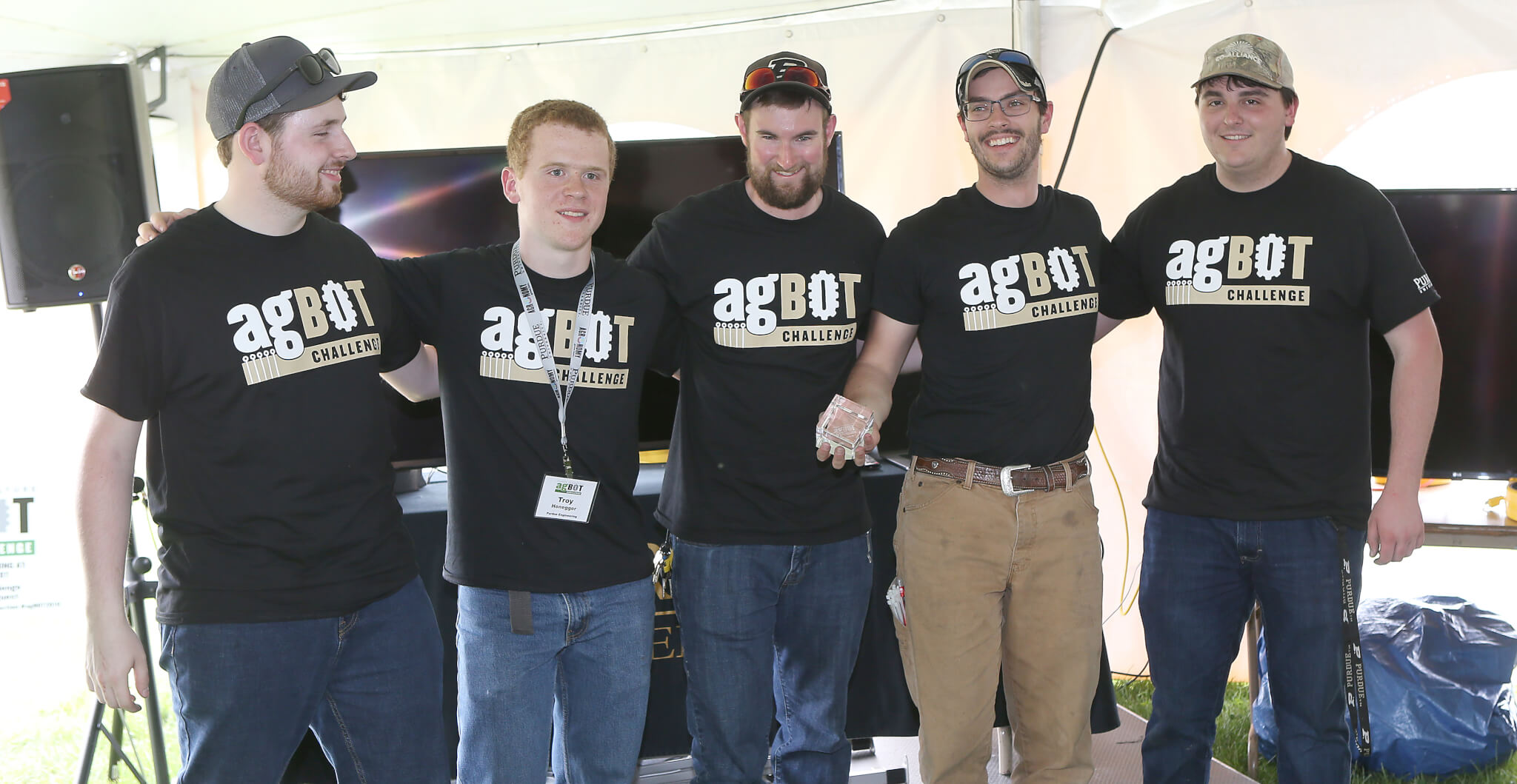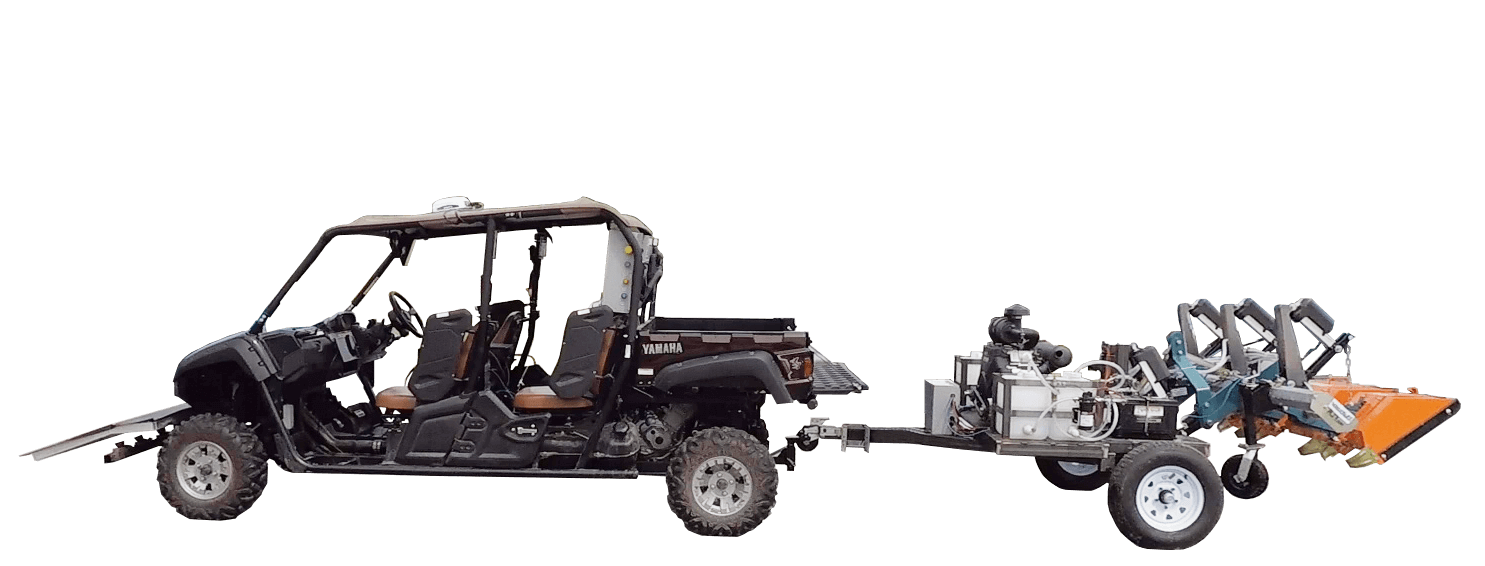
By Chad Campbell
Presenting to the agBOT Challenge judges, Elliott Sass and his Purdue teammates looked far from formal. Stains on their pants mapped precisely where they had leaned against their robot as they made final modifications. Though the team was hard at work for months leading up to the event, they made adjustments until the literal last minute. The hands that passed a microphone between teammates were stained with grease, accented by blue dye used to spray ragweed.

“What we’ve created is a proof of concept for fully autonomous vehicles in agriculture,” Sass explained to the panel. “There are three main things our agBOT has the potential to do: decrease the overall cost of farm operation, reduce negative environmental impacts and compensate for farm labor shortages.”
"Our agBOT has the potential to decrease the overall cost of farm operation, reduce negative environmental impacts and compensate for farm labor shortages."
Facilitating innovation is what inspired Purdue alumnus Steve Gerrish to found the agBOT Challenge with his daughter Rachel in 2015. “The agBOT Challenge was designed as a symbolic event to provide a vision of what could be possible if we had high tech and high-speed internet on the farm,” said Gerrish. “Competitions are a great way to drive innovation and create a cross-collaborative effort in the agtech space.”
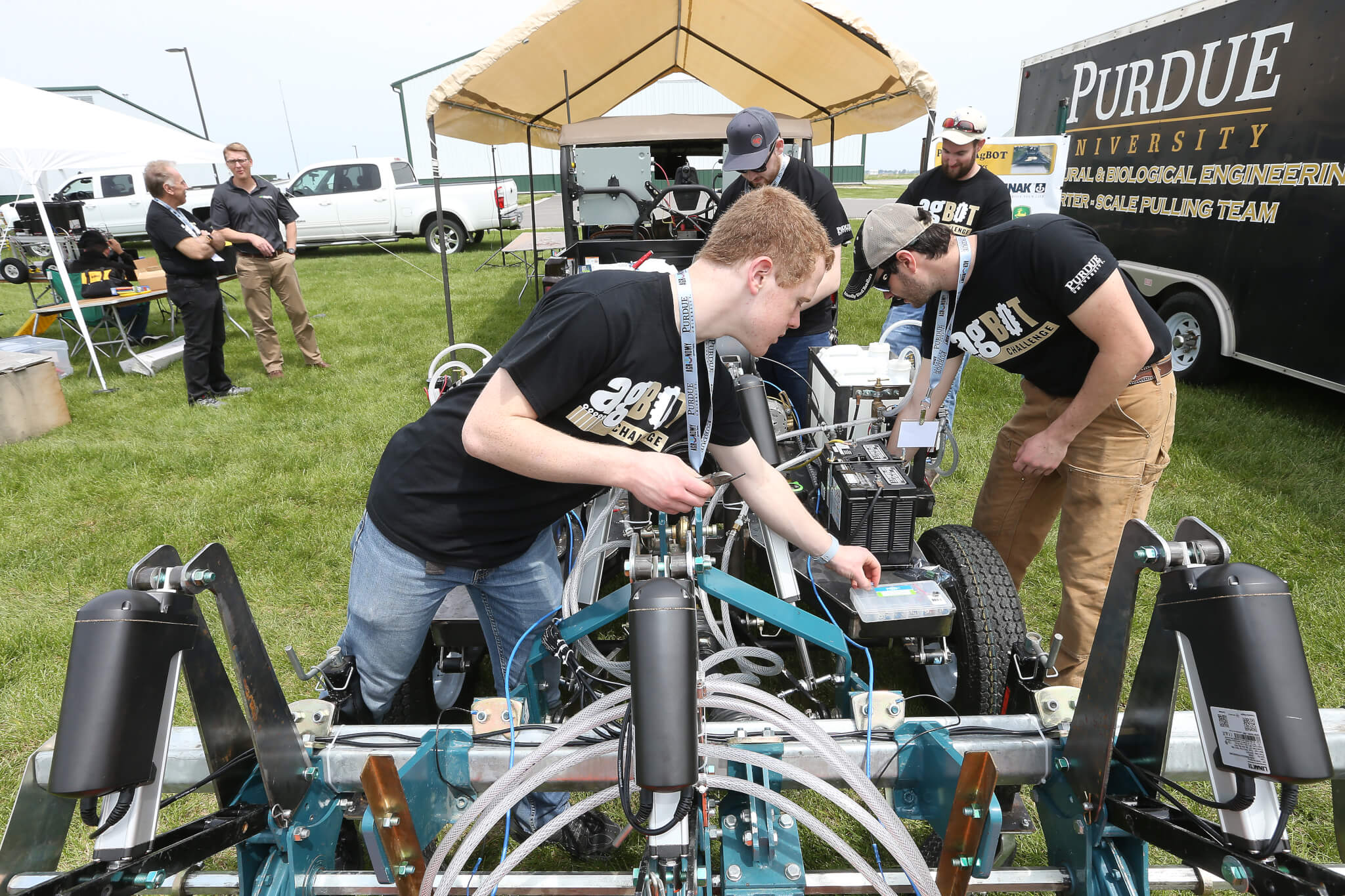
Previously conducted at Gerrish Farms, the agBOT Challenge moved to Purdue’s Agronomy Center for Research and Education (ACRE) this year to accommodate continued growth. The three-day event included the NextGen Expo and two separate competitions between international teams’ autonomous vehicles.
The Weed and Feed Competition challenges teams to create autonomous machines capable of identifying plants while navigating a cornfield. The vehicles destroy weeds and fertilize crops, as needed.
Roger Tormoehlen, professor of agricultural and biological engineering (ABE), recalls leading his original team of students through unrestricted brainstorming sessions three years ago.
“My role was simply to advise. The first year, attempting to find a way to eliminate the weeds, we had a serious discussion about using lasers,” Tormoehlen said. “Being at Purdue, we were even able to speak with an expert engineer on the subject. The team also talked about using a burning system like a torch or flamethrower. We don’t limit the discussion. We try not to even factor in finances. We want to be very open as we look for solutions.”

“Purdue’s agBOT program was limited to seniors as a capstone course,” Tormoehlen said. “This year we’ve opened it up to gain some continuity other than myself and my co-advisor. We had three focus areas this year as well as three seniors working on the project for the ABE capstone program.”
Sass, an ABE and forestry major, served as one of the three leaders. “Our group created a separate custom trailer and moved the auxiliary engine to it from the bot. The main reason for the change was to give users more versatility. Now, there’s only a single Ethernet cable running between our vehicle and the trailer. Essentially, if you disconnect the trailer hitch and the cable, you can return the vehicle back to normal for other uses around the farm.”
A second group improved the agBOT’s plant identification system. “We collaborated with the departments of Botany and Plant Pathology and Agronomy. In their greenhouses, they grew the species of plants we will encounter. Students took pictures at each stage of development from different angles under various lighting conditions,” Tormoehlen said.
“With our new object detection system,” said Sass “our system actually finds the plant instead of just recognizing there is a plant somewhere in the picture. It improves the speed and the accuracy with which we fertilize crops and remove weeds.”
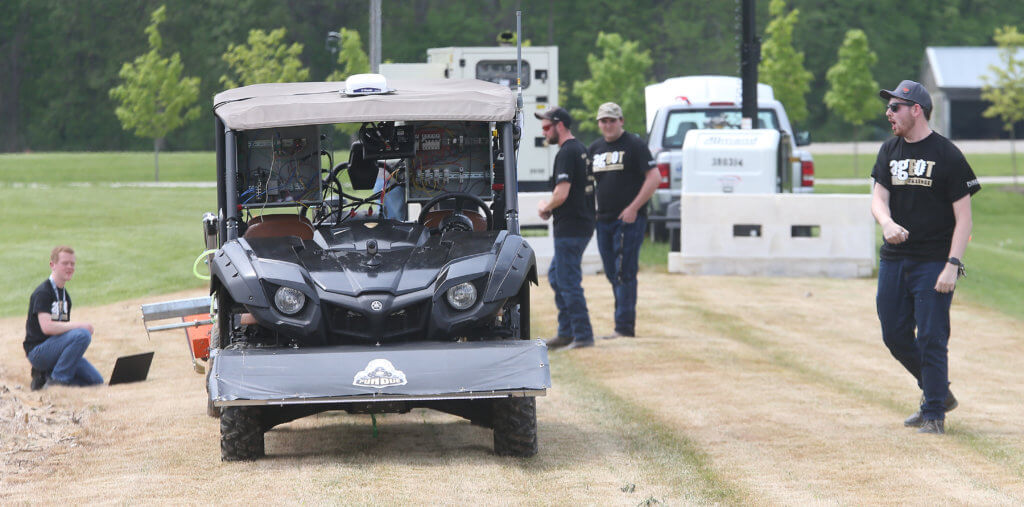

By precisely spraying where the chemicals are needed and mechanically removing weeds between rows, the agBOT reduces the financial and environmental impact of herbicides.
“Chemical application can be a large concern for some people,” Sass explained. “Fewer chemicals means less runoff and expenses.” The Purdue Weed and Feed team estimates its vehicle reduces the application of herbicides and fertilizers by up to 70%.
Another issue addressed by Purdue’s agBOT is America’s ongoing farm labor shortage. Team member Aaron Etienne, an ABE graduate research assistant, has seen the need firsthand.
“With extremely low grain prices and ever-increasing input costs, many family farms aren't able to survive,” said Etienne. “My family runs a medium-sized farm in southern Illinois and we are very understaffed. With my grandpa and great uncle retiring, my uncle is the only person who runs the farm full-time. To deal with this issue, several family members come in to help with planting and harvest."
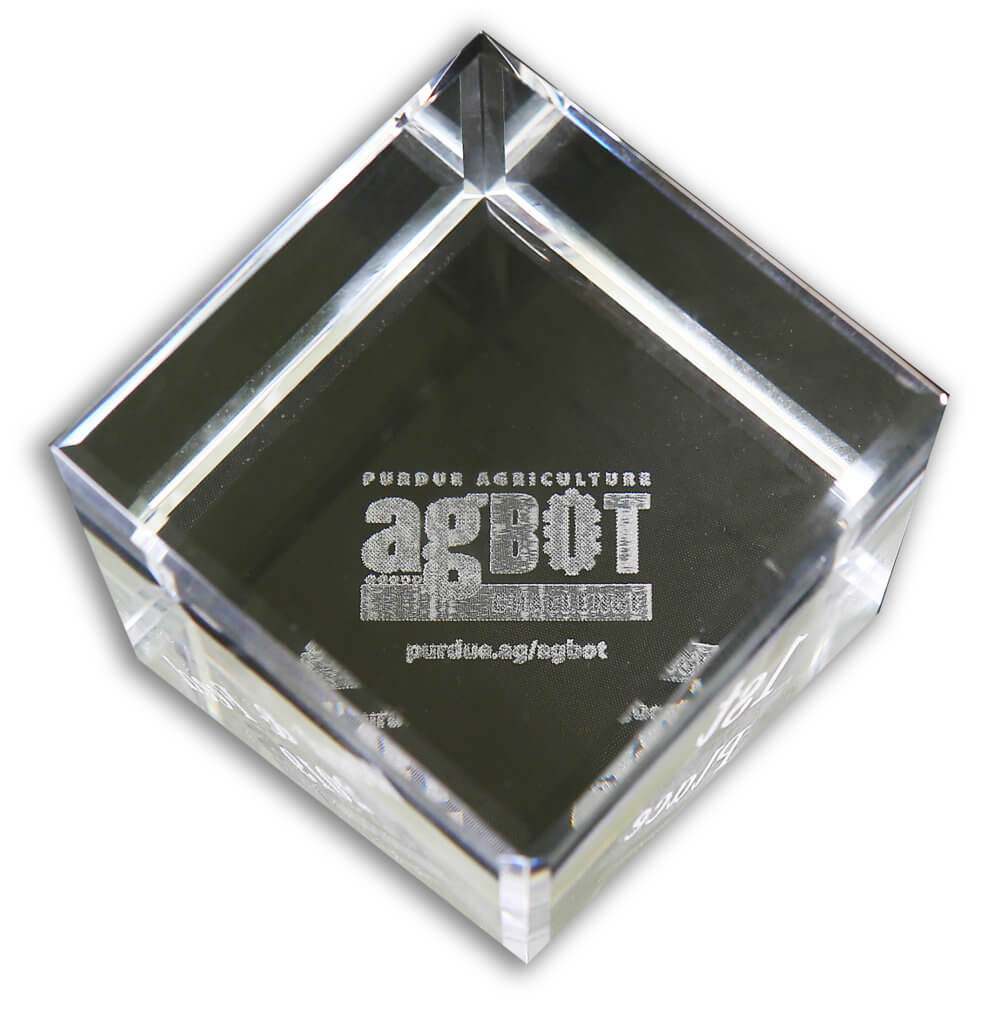
Despite the areas the team wishes they’d had more time to improve, Purdue’s agBOT was the first place winner in the 2019 Weed and Feed Competition.
“All in all, said Sass, “I am more than proud of everyone on the team. We all put in the long days and hard work that was needed to get us this far. I do not see that drive going away next year. This win is a huge one for the Purdue University agBOT program and the future of agriculture.”
Photos by Tom Campbell
